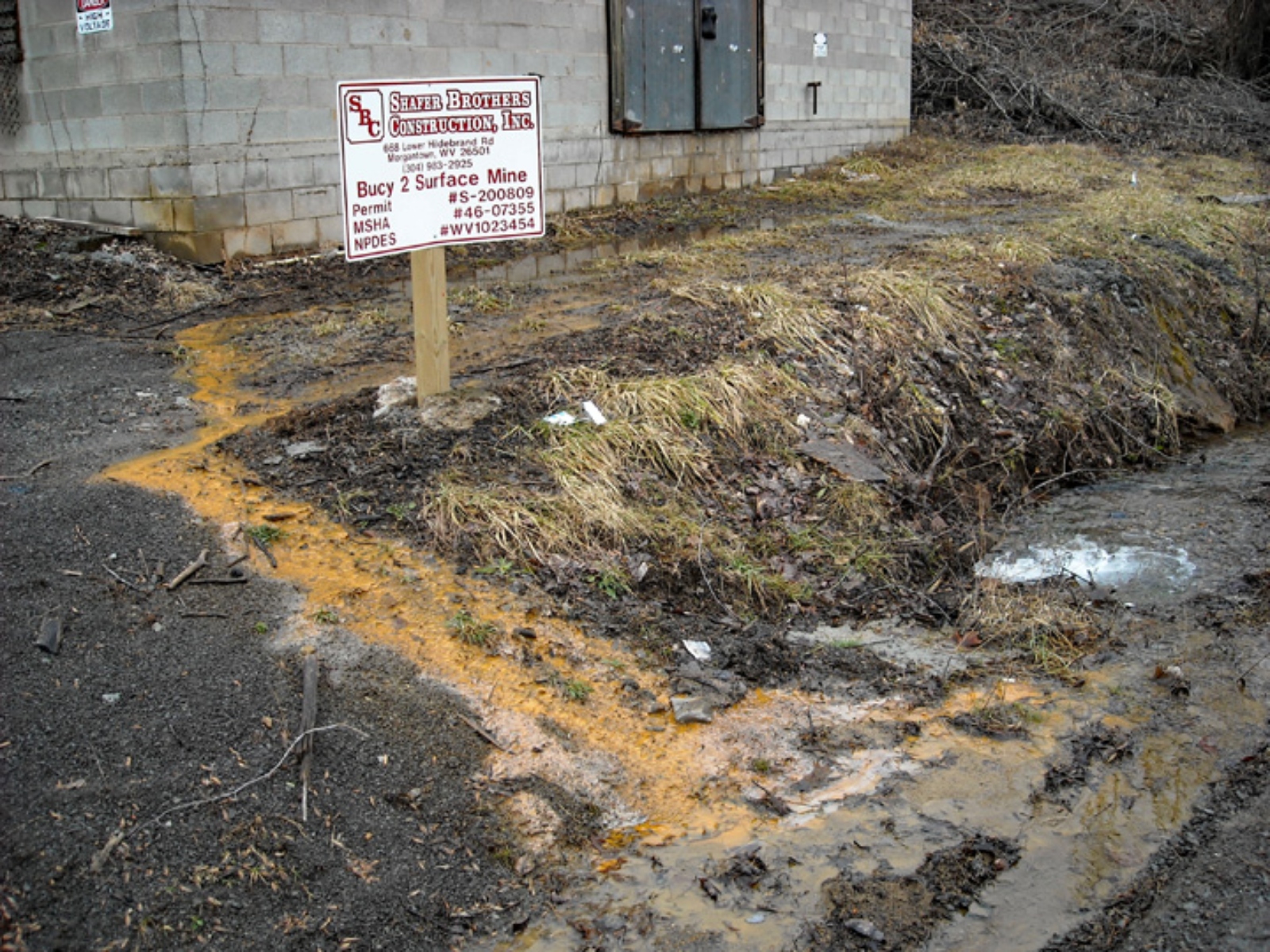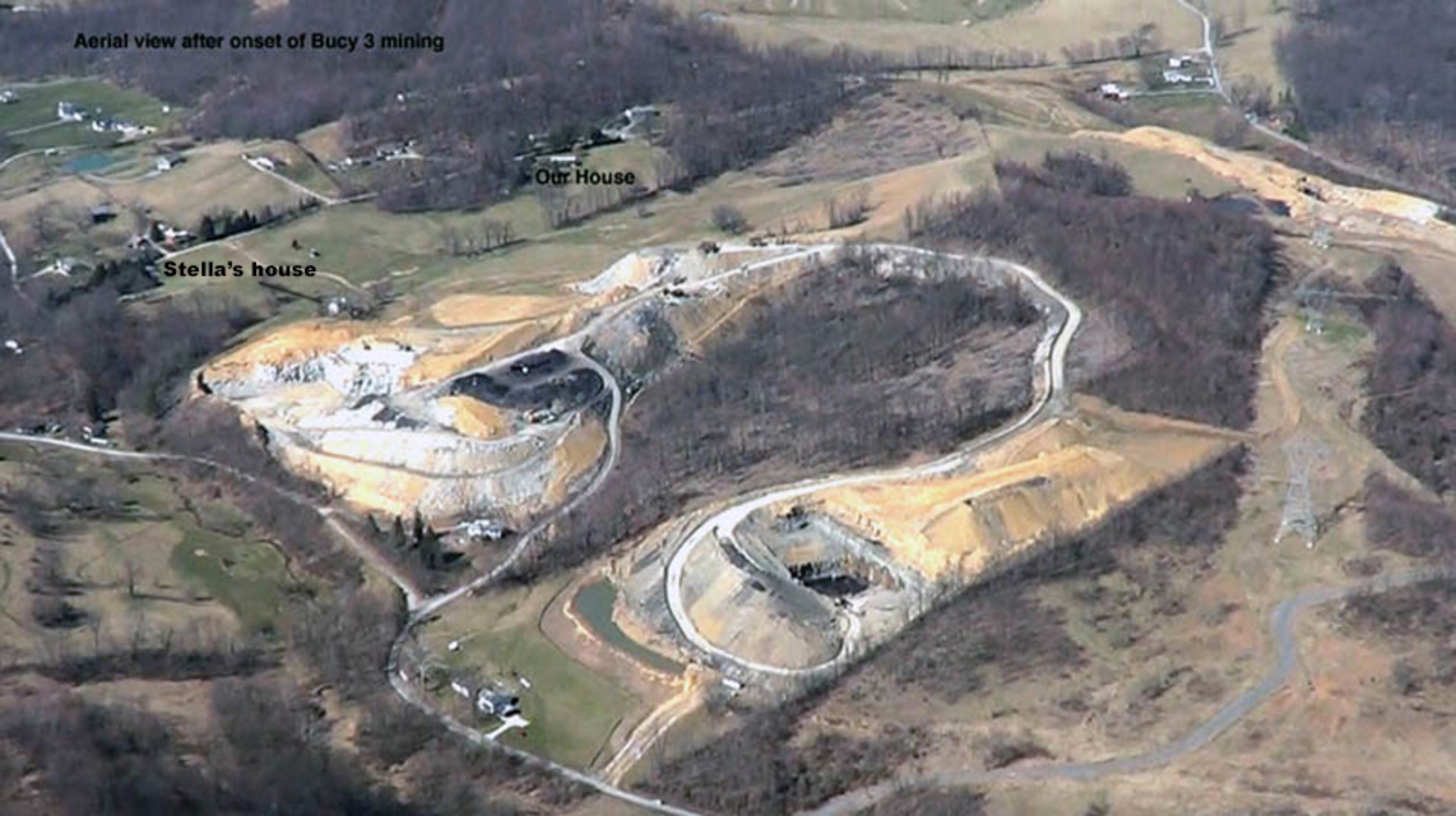Betsy Lawson was young and in love when she moved to the outskirts of Morgantown, West Virginia, in 1978. The 24-year-old and her soon-to-be husband bought 11 acres of land covered in green pastures and thriving woodland. They ate deer hunted by their neighbors* and fish caught out of nearby streams.
But in 2007, coal mining companies began buying up land near her property, seeking to turn a profit on the energy sources stored underneath the community. Lawson threw herself into trying to prevent mine construction — attending public hearings and sending letters to decision makers — but the industry won out. She remembers being told that the companies would be required to clean up the land after they were done mining it, leaving it in better condition than before.
That didn’t happen. Shafer Brothers Construction Inc., the company that ran the coal mine closest to Lawson’s home, filed for bankruptcy in 2014 and abandoned the mine. Today, Lawson looks out her window at an enormous mountain of excavated rocks and dirt. There are cracks in her floors from the frequent explosions companies used to blast their way down into the earth. She and her husband no longer eat local fish and deer — the streams and rivers have taken on a bright orange color from the heavy metals that drain out of the mine.
“That’s what we’re left with,” said Lawson, who is now 67 years old. “What used to be a really attractive, traditional farming community now looks more like an industrial wasteland.”
It’s possible to clean up, or reclaim, abandoned mines like the ones around Lawson’s home, but the costs can be mind-bogglingly high, sometimes totaling tens of millions of dollars for a single mine. In West Virginia, the question of who foots that bill has gotten messy, with bankrupt coal companies, insurers, and the state government lacking the capital to pay for full-mine reclamation.
The state’s reclamation funding system is broken and needs to be improved immediately — at least that’s the argument laid out in a lawsuit filed last week by the Sierra Club and West Virginian environmental groups against the U.S. Office of Surface Mining, Reclamation, and Enforcement, or OSMRE.
“All of the backstops that are supposed to be in place to make sure that at the end of the day nobody has to live next to an abandoned coal mine — all of those backstops are now threatened,” said Peter Morgan, a senior attorney for the Sierra Club.
In their complaint, filed in the Southern District of West Virginia, the Sierra Club, Ohio Valley Environmental Coalition, and West Virginia Highlands Conservancy accused OSMRE of failing to require the state to improve its dangerously underfunded coal mine reclamation program. Under the 1977 Surface Mining Control and Reclamation Act, or SMCRA, states are encouraged to develop their own programs to reclaim abandoned mines, but the federal government oversees the programs and is obligated to require amendments when necessary.
Before a coal mining company begins operating in West Virginia, it must post a penal bond with an insurance company to cover a portion of the mine cleanup costs. The amount of the bond, however, is not based on an estimate of the real cleanup cost, but rather a per-acre rate of $1,000 to $5,000. “The understanding is it’s always going to be smaller than the actual cost,” Morgan said. “That’s where the bond pool comes in.” The state also maintains a bond pool, which coal mining companies pay into through a tax on every ton of coal mined. West Virginia can dip into this bond pool when mine reclamation costs are higher than the penal bond posted by a mining company. Morgan said this system is flawed, since it was created on the premise that there would always be a robust demand for coal — an assumption that has been proven false as the industry has tanked in recent years.
This growing financial gap is worrisome to environmentalists. Of the 636 mines that have been shuttered in West Virginia in recent decades, 118 still have yet to be reclaimed. And without proper funding, could they remain that way?
“The problem is now that we are seeing the permanent decline of the coal industry, the bond pool is being threatened from both sides,” Morgan said, likening West Virginia’s program to a house of cards. “Fewer tons of coal are being mined in West Virginia every year, so there’s less and less money coming into the fund. At the same time, the risk of abandonments and the state being responsible for paying for reclamation out of the fund is just increasing.”
Last year, the cracks in this funding system became starkly apparent. The coal mine operator ERP Environmental Fund Inc., which owns over 100 in-state coal mines, was financially drowning. Rather than allowing the company to go bankrupt, leaving cleanup costs to its penal bond and the bond pool, the state took matters into its own hands. “West Virginia said ‘We cannot let ERP go down that path,” Morgan said. “‘Instead, we’re going to take the extraordinary step of getting the state to appoint a special receiver to take control of the company.” The appointment shielded ERP from lawsuits by creditors, and the special receiver was permitted to prioritize the cleanup of some sites over others, since state regulators acknowledged it didn’t have enough money to begin reclamation of all sites at once.
In the lawsuit West Virginia was required to file in order to appoint the special receiver, the state’s then-Director of Mining and Reclamation, Harold Ward, filed affidavits stating that ERP’s inability to pay its debts threatened the state’s own mine reclamation funding program. It was the smoking gun environmental groups needed to show that the program is teetering on the edge of disaster.
“West Virginia, in pursuing the extraordinary step of getting that special receivership, had to make certain statements on the record,” Morgan said. “And so that provides all the evidence we need to bring this lawsuit.”

This isn’t the first time alarm bells have been raised over the instability of reclamation funding in coal country. Many states across Appalachia have similar financial sets up as West Virginia, including Kentucky, Virginia, and Ohio. In 2018, the U.S. Government Accountability Office published a report recommending changes be made to bonding systems so that states aren’t on the hook for reclamation funding when companies go bankrupt.
Last year, after West Virginia appointed a special receiver to ERP, the same environmental groups who filed this most recent lawsuit sued the West Virginia Department of Environmental Protection, or DEP, arguing that it had failed to notify the federal surface mining office, OSMRE, that its reclamation program was underfunded. The groups dropped last year’s suit after the state DEP made the requested notification in December. However, they filed last week’s lawsuit because they believe the federal agency should have required improvements to West Virginia’s reclamation program after being notified of its risky funding status. Neither the West Virginia DEP nor OSMRE responded to Grist’s requests for comment by the time of publication.
If the environmental groups win this most recent lawsuit and West Virginia is required to amend their mine reclamation bond program, the state will go through the time-consuming process of holding public hearings and getting federal approval for those changes. That’s why Morgan of the Sierra Club wants the case to be handled urgently. While the government and courts deliberate, people like Lawson will be staring out their window at the carcass of what was once farmland, a forest, or grazing land for wild animals.
“I don’t think it’ll ever look like it did when we first moved here,” Lawson said. “That’s the curse of West Virginia, that in so many places, the coal companies just declare bankruptcy and disappear.”
*Correction: This story originally misstated who caught the deer eaten by the Lawsons.





